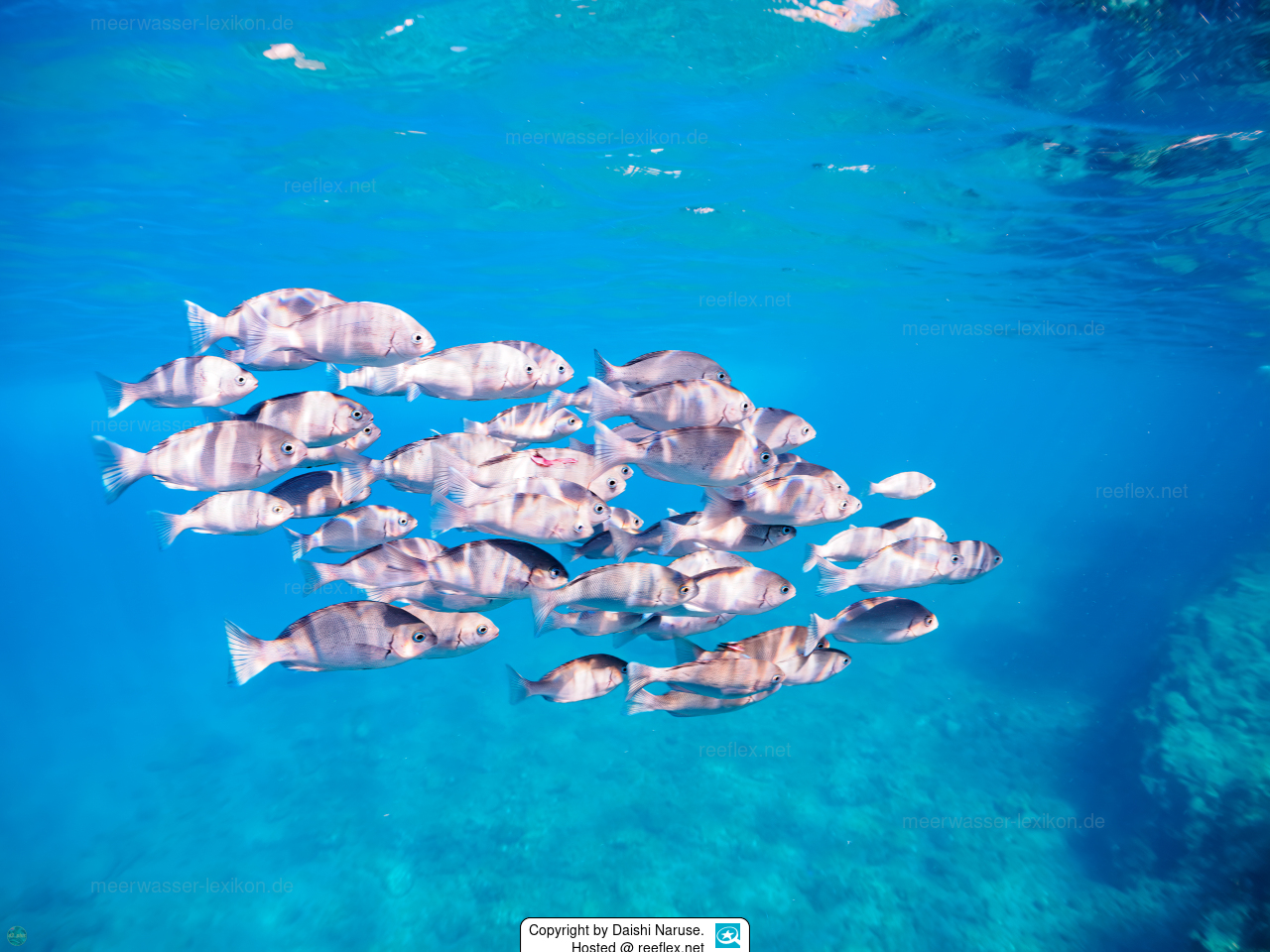Info
Girella punctata and the Girella leonina are sympatric sister species, both forming large swarms in which both species swim together.
The body of the goby is elongated, its mouth is small and does not extend beyond the eye at the back.The upper lip is thin, the upper jaw is hidden by the suborbital bone, and the outer teeth in the jaw are usually three-tipped incisors.
The single dorsal fin is characterized by 14 to 15 spiny rays and 12 to 15 soft rays.The anal fin has three spiny rays and 11 to 13 soft rays, the pelvic fins are inserted just below or just behind the base of the pectoral fins.
The caudal fin is broadly forked. The skin scales are small, comb-shaped, extending onto the cheeks and the upper part of the gill covers as well as the base of the dorsal and anal fins, but not covering most of the soft part of the dorsal and anal fins.
The number of lateral line scales is between 50–56.
The body is colored dark bluish gray to greenish gray on top and silvery on the belly.
Juveniles live in drifting seaweed, feeding on crustaceans and suspended algae. When the algae no longer provide sufficient cover for the growing juveniles, the young fish form schools to protect themselves from predators.
Girella punctata is fished commercially and is a sought-after, tasty game fish for fly-fishing fans.
Synonyms: Crenidens leoninus Richardson, 1846 · unaccepted
The body of the goby is elongated, its mouth is small and does not extend beyond the eye at the back.The upper lip is thin, the upper jaw is hidden by the suborbital bone, and the outer teeth in the jaw are usually three-tipped incisors.
The single dorsal fin is characterized by 14 to 15 spiny rays and 12 to 15 soft rays.The anal fin has three spiny rays and 11 to 13 soft rays, the pelvic fins are inserted just below or just behind the base of the pectoral fins.
The caudal fin is broadly forked. The skin scales are small, comb-shaped, extending onto the cheeks and the upper part of the gill covers as well as the base of the dorsal and anal fins, but not covering most of the soft part of the dorsal and anal fins.
The number of lateral line scales is between 50–56.
The body is colored dark bluish gray to greenish gray on top and silvery on the belly.
Juveniles live in drifting seaweed, feeding on crustaceans and suspended algae. When the algae no longer provide sufficient cover for the growing juveniles, the young fish form schools to protect themselves from predators.
Girella punctata is fished commercially and is a sought-after, tasty game fish for fly-fishing fans.
Synonyms: Crenidens leoninus Richardson, 1846 · unaccepted







 Daishi Naruse, Japan
Daishi Naruse, Japan







